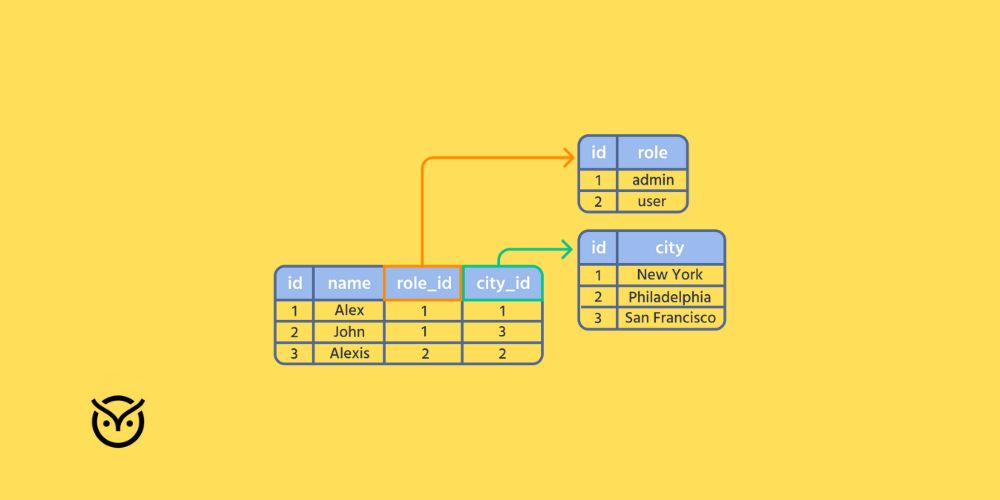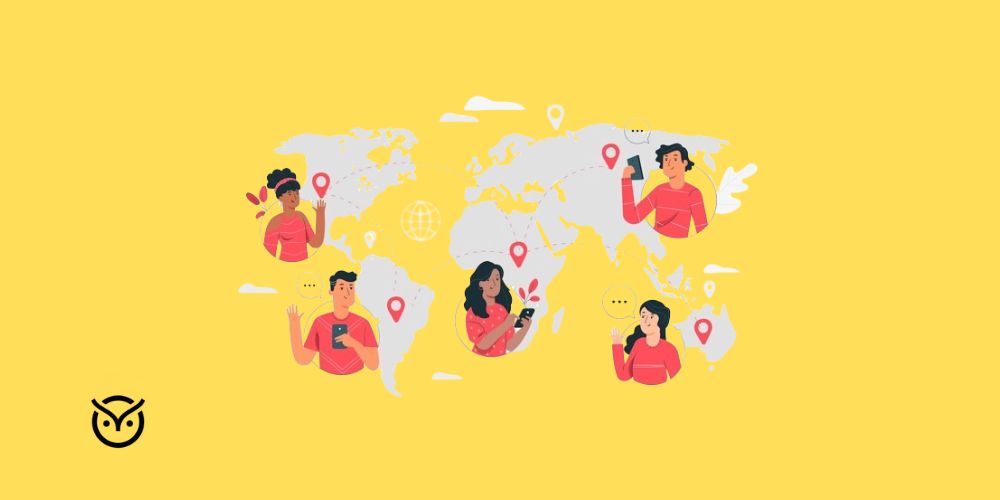
TL;DR
- Scaling global hiring without structure causes delays, risks, and drop-offs
- Global hiring automation standardizes screening, scheduling, and communication
- Automation enforces fairness, smooth workflows, and fewer errors
- Recruiters save time; candidates get faster responses
- Success needs a clear strategy, data, and a phased rollout
Hiring across borders brings excitement, but more often it brings headaches. When you run global hiring, you juggle local laws, varied time zones, cultural expectations, and dozens of tiny process steps. Without structure, every hire can feel like reinventing the wheel.
The good news is you don’t have to stay in chaos. Automation built for global talent acquisition can inject consistency. This blog will show how a clear and repeatable system can turn disorganized hiring into a process that runs smoothly and grows without friction.
Why Global Hiring Feels Chaotic
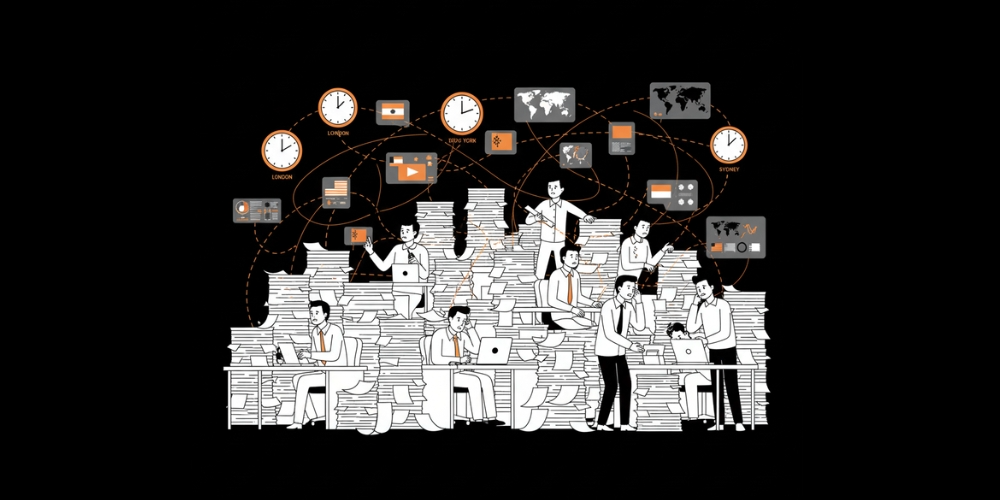
Fragmented local rules and compliance
Each country has labor laws, tax rules, contract standards, and visa requirements. It’s easy to slip into non-compliance just by copying your home country’s process.
Time zone, language and scheduling conflicts
Interviewing someone in Tokyo, Berlin, or Sao Paulo means juggling calendars, messages in different languages, and misaligned expectations. That delays processes or causes dropped candidates.
Inconsistent process per region
Without a unified system, different hiring teams do things differently. Some require extra interviews, some skip background checks, and some delay communication. That inconsistency damages the employer brand and slows decisions.
Manual, repetitive workflows
Recruiters often spend 40% of their time just reviewing resumes or sending follow-ups manually. Alongside that, scheduling, screening, and tracking all become error-prone if done by hand.
Hard to measure and improve
With no standardized metrics, it’s tough to compare hiring speed, drop-off rates, or candidate satisfaction across regions. You lack visibility and control.
What Is Global Hiring Automation?
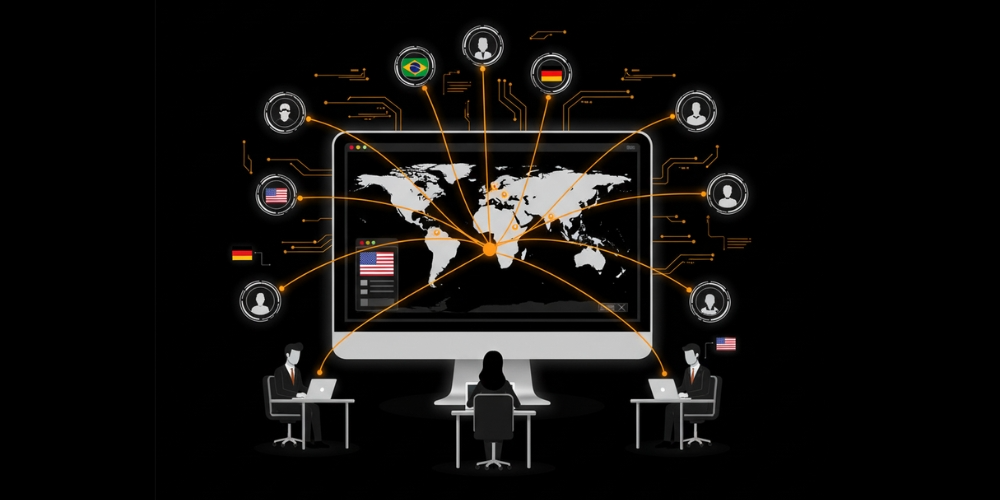
Global hiring automation is the use of technology to drive, orchestrate, and standardize the end-to-end hiring workflows across multiple countries or regions. It replaces manual but routine steps with software-driven processes.
At its core, this automation can include:
- Resume parsing & screening tools that shortlist candidates by criteria
- Automated scheduling that syncs time zones and calendars
- Automated updates through email, text, and reminders
- Standard forms for assessments and candidate reviews
- Built-in compliance steps, like checking local labor laws
- Global dashboards to track progress and results
In effect, the software becomes your process guardrail, ensuring that every region follows the same playbook and deviations are flagged.
What Is Global Hiring Automation?
How Automation Brings Consistency to Global Hiring
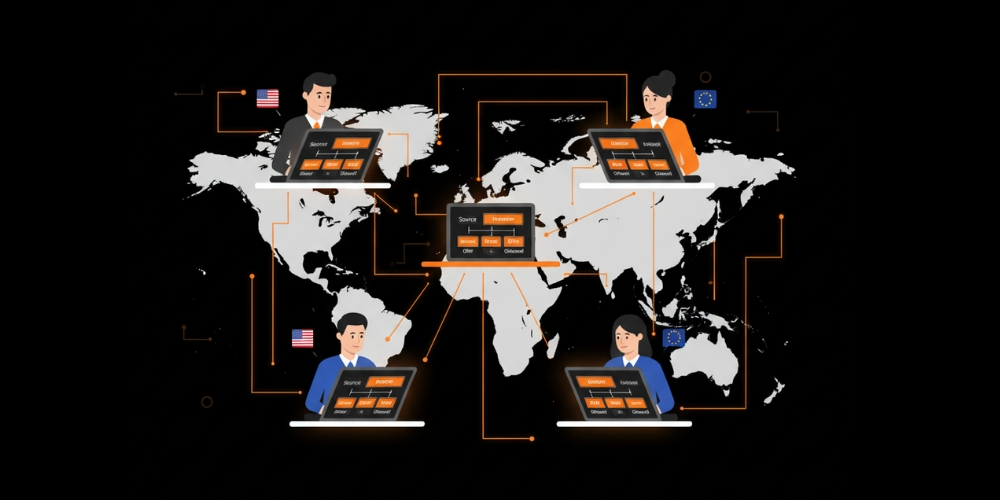
Enforced structure in workflows
By defining stages, approvals, and rules ahead of time, every candidate passes through the same steps from screening to offer. Deviations are exceptions, not the norm.
Uniform evaluation and bias reduction
When assessments and interviewer forms are standardized, comparisons are fairer. Automation also helps apply scoring rules consistently rather than relying on individual judgment.
Central visibility and metrics
Your leadership or recruiting team can see the hiring funnel, time-to-hire, and rejection rates across all regions. That visibility enables continuous improvement.
Predictable scalability
Because processes are repeatable, you can scale into new countries without rebuilding everything. The same workflow can be reused with minor localization.
Automated compliance gates
You can embed checks (legal, contract templates, taxation rules) into the flow. A candidate can’t move forward unless compliance is satisfied.
Reduction of human error
Automation eliminates manual steps prone to oversight, such as missed emails, forgotten tasks, and inconsistent scheduling, which otherwise slow or break the process.
Smarter resource allocation via analytics
With consistent data, you can apply workforce planning and analytics to forecast hiring needs, identify bottlenecks, and allocate recruiter effort wisely.
How Automation Brings Consistency to Global Hiring
Drag the steps into the correct order, then press Check Order.
- Compliance Check
- Offer Letter
- Interview Scheduling
- Resume Review
Benefits for Recruiters and Employers
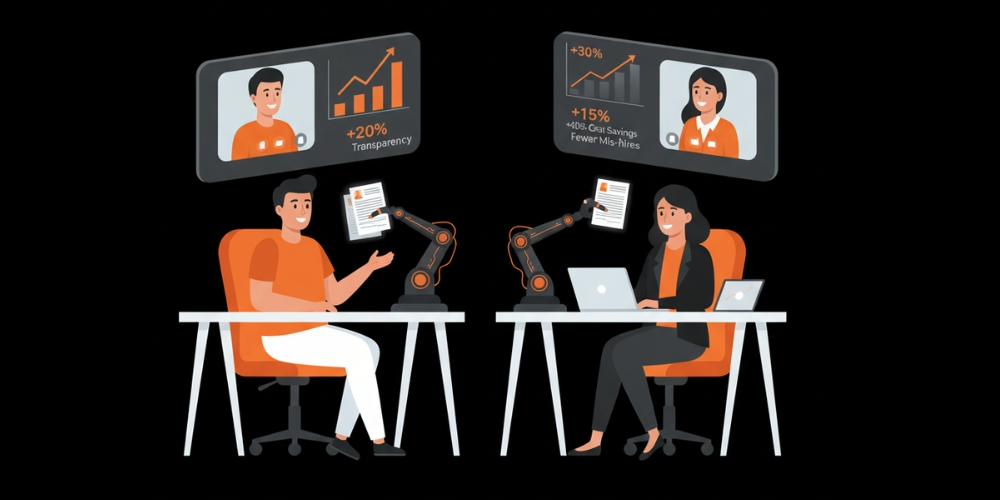
Recruiters often feel stretched between administrative tasks and strategic hiring goals. With global hiring automation, the balance shifts.
- Time savings: Routine tasks like screening resumes and sending interview reminders are automated. According to Gartner, automation can cut up to 30% of recruiting cycle time.
- Consistency across regions: Hiring managers follow the same process whether they are in London or Dubai, reducing miscommunication.
- Improved compliance: Rules and workflows are pre-set to ensure labor regulations are met in each country.
- Scalability: Expanding into new markets no longer requires building a process from scratch. You can replicate and localize.
- Stronger employer branding: Candidates see a professional and smooth experience that reflects positively on the company.
Benefits for Recruiters and Employers — Mini ROI Calculator
Estimate monthly time saved by automation.
Benefits for Candidates
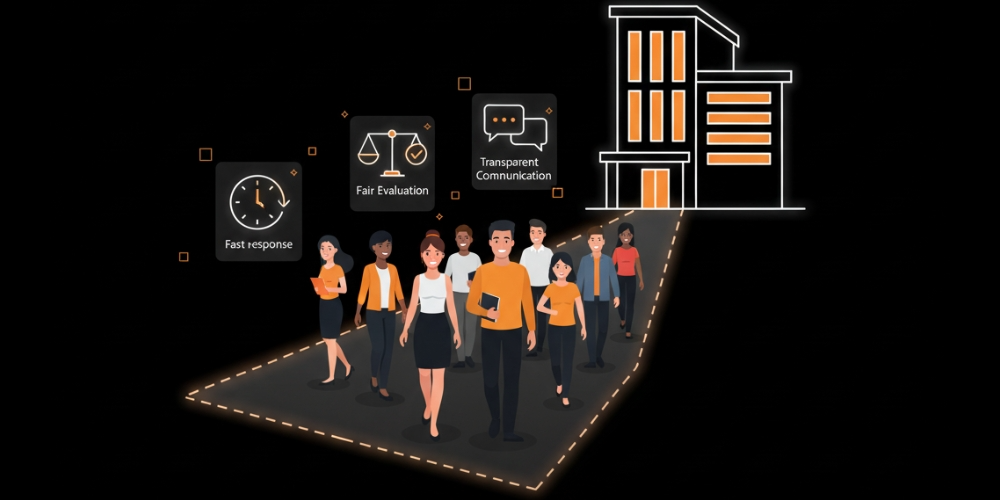
The candidate experience is just as critical as recruiter efficiency. A clunky, slow process can drive away top talent. Automation changes this.
- Faster response times: Automated acknowledgments and updates keep candidates in the loop. No more waiting weeks for feedback.
- Streamlined scheduling: Calendar integrations eliminate the endless back-and-forth emails.
- Fairer evaluations: Automated assessments ensure every candidate faces the same criteria, which helps reduce unconscious bias.
- Transparency: Status updates and consistent communications show respect for candidates’ time.
Benefits for Candidates — Journey Comparison Slider
Drag the handle to compare the before vs after experience.
Best Practices for Implementing Global Hiring Automation
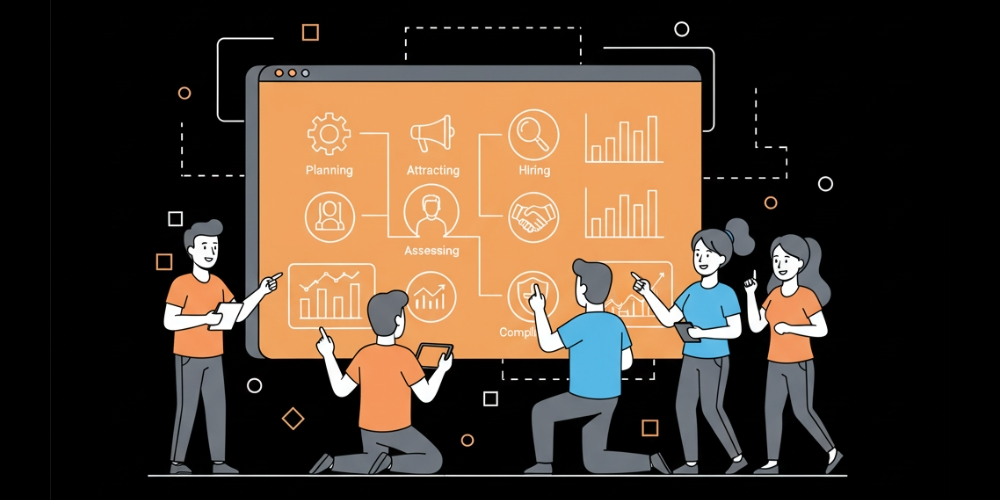
Rolling out automation isn’t about buying the shiniest tool. It’s about embedding it wisely.
Start small, scale gradually
Pick one or two workflows (like interview scheduling or resume parsing) and automate those first. Early wins build momentum.
Focus on compliance from day one
Make sure automation embeds regional rules. Otherwise, mistakes at scale are harder to fix.
Keep recruiters in the loop
Automation should support people, not replace them. Involving recruiters in tool design ensures adoption and trust.
Integrate with existing systems
Choose platforms that sync with your ATS, HRIS, and communication tools. Disconnected systems create more chaos.
Measure and improve with analytics
Use reporting to track hiring funnel metrics, candidate satisfaction, and recruiter efficiency. This is where AI hiring trends and predictive models can help forecast needs and optimize processes.
Balance automation with personalization
Automated reminders are efficient, but a human touch is still essential in final interviews or offer calls.
When automation is paired with data-driven hiring practices, the result is faster decision-making, stronger compliance, and measurable ROI.
Conclusion
Global talent acquisition used to feel like juggling flaming torches as it’s high-risk, stressful, and messy. But with automation, those torches turn into well-placed spotlights guiding the way.
By automating repetitive steps, enforcing compliance, and ensuring consistent candidate experiences, companies can finally bring order to global hiring. The result isn’t just efficiency for recruiters but also a smoother, fairer process for candidates.



